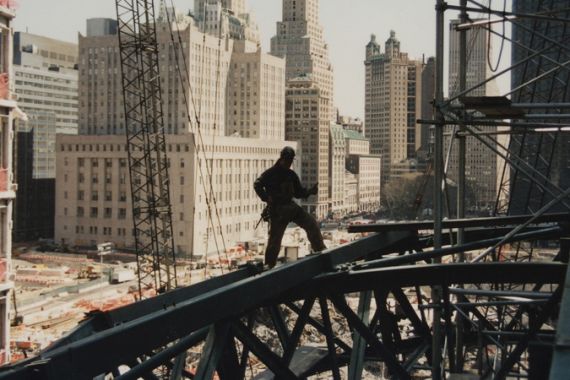
Skydancer
Mohawk ironworkers raised America’s cityscapes but who are these ‘sky dancers’ with homes on the reservations?
Editor’s note: This film is no longer available online.
Filmmaker: Katja Esson
Keep reading
list of 4 itemsCould shipping containers be the answer to Ghana’s housing crisis?
Are Chinese electric vehicles taking over the world?
First pig kidney in a human: Is this the future of transplants?
The Brooklyn Bridge, the Empire State Building, the World Trade Center – for 120 years Mohawk ironworkers have raised America’s modern cityscapes.
They are called skywalkers because they walk fearlessly atop steel beams just a foot side, high above the city.
Who are these Mohawk skywalkers and what is their secret for overcoming fear? Has skywalking replaced an ancient rite of passage or is it the pure need to adapt in order to survive?
This Witness film finds out whaty their life is really like, when every Friday they jump in the cars and make the eight-hour drive up north to their families on the reservation.
FILMMAKER’S VIEW
By Katja Esson
As a German filmmaker living in New York City, I heard about the legend of the Mohawk ironworkers and reflecting on German fascination with Native Americans, I was intrigued by that story.
After the attack on the Twin Towers on 9/11, I was surprised to read in a newspaper article that Mohawk ironworkers from all over the country were among the first to rush to Ground Zero, working many months in the ruins. This was despite the controversies that exist between the Native Americans and the US government over issues such as sovereignty, land disputes and smuggling. I wanted to know more about these men who live as ‘outcasts’ in the American society and yet are American down to the bone.
I started my research in 2002 and found a deep-rooted distrust of media and outsiders within the Mohawk community because of the ongoing feeling of misrepresentation.
It took me several years to slowly and respectfully immerse myself into the lives of these Mohawk ironworkers. Earning their trust and their friendships is an ongoing process, during which I could feel myself changing as well. The project also helped me evolve as a filmmaker, forcing me to look at things differently, requiring much more spiritual openness, commitment and time in order to truly be able to absorb the Mohawk culture with truthfulness.
Sky Fox Bear, one of the ironworkers said to me: “The Ironworkers left an incredible legacy for us to be proud of, but in pursuit of that [they] also left a lot of wounds and scars but I guess any type of glory attained, is a price to pay.”
Although throughout the years there have been films about the Mohawk ironworkers, they have been mostly looking at this ‘curious’ cultural phenomenon from the outside, from a more ethnographic perspective. I tried to look from inside out, tracing and contrasting the personal stories of these Mohawk ironworkers who are building the cities of the future while trying to rebuild their traditions. I attempted to let these stories resonate as metaphors for a better understanding of our common humanity.
“We have a new generation of young people who are hungry to restore and rescue our old ways so it is a real powerful time that we are in” – this is what I kept hearing from elders and spiritual leaders
And after a while, I could see how old ways and traditions were carefully restored. But I also realised that the restoration of one tradition might be the end of another. I could see that the new generation suddenly saw different options for their future and did not feel they had to become “fearless ironworkers” like their fathers and grandfathers and I realised that Mohawk ironworking could become a dying trade.